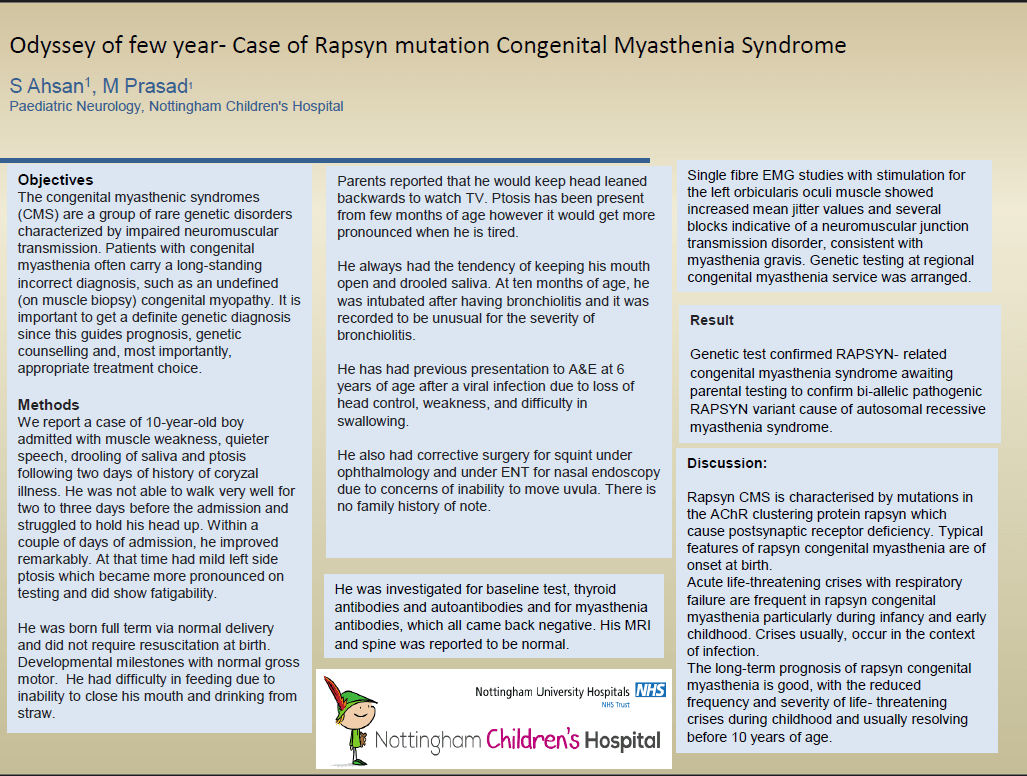Odyssey Of Few Year
Objective: The congenital myasthenic syndromes (CMS) are a group of rare genetic disorders characterized by impaired neuromuscular transmission, often carry a long-standing incorrect diagnosis.
Method: We report a case of 10 year old boy admitted with muscle weakness, quieter speech, drooling of saliva and ptosis following two days of coryzal illness. Within few days of admission, he improved remarkably other than persistent left side ptosis. His birth history and motor developmental milestones were normal. He had difficulty in feeding due to inability to close his mouth and drinking from straw. He was reported to keep head leaned backwards to watch TV due to ptosis. At ten months of age he was intubated after having bronchiolitis, recorded to be unusual for the severity of bronchiolitis. There is no family history of note. His autoantibodies for thyroid and myasthenia gravis came back negative. Radiological investigations were unremarkable. Single fibre EMG studies with stimulation of the orbicularis oculi muscle showed increased mean jitter values and several blocks indicative of a neuromuscular junction disorder. Genetic testing at regional congenital myasthenia service was arranged. Result: Genetic test confirmed RAPSYN- related congenital myasthenia syndrome, a cause of autosomal recessive myasthenia syndrome. Conclusion: Rapsyn CMS is characterised by mutations in the AChR clustering protein rapsyn which cause postsynaptic receptor deficiency. Acute life-threatening crises with respiratory failure are frequent particularly during infancy and early childhood. The long-term prognosis is good, with reduced frequency of life- threatening crises during childhood and usually resolving before 10 years of age.
Sadaf Ahsan
Nottingham University Hospital
United Kingdom
Manish Prasad
Nottingham University Hospital
United Kingdom

Manish Prasad
Nottingham University Hospital
United Kingdom